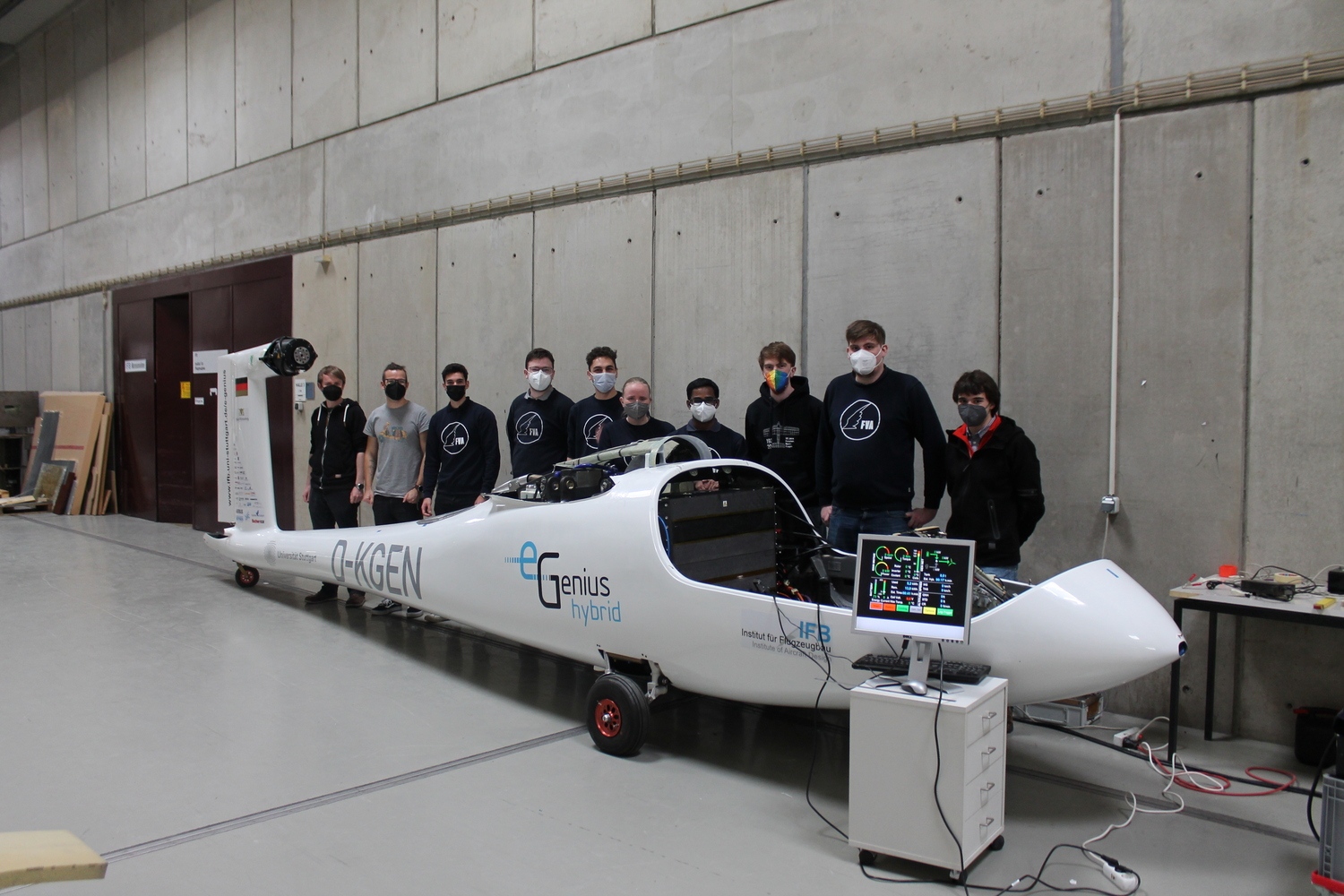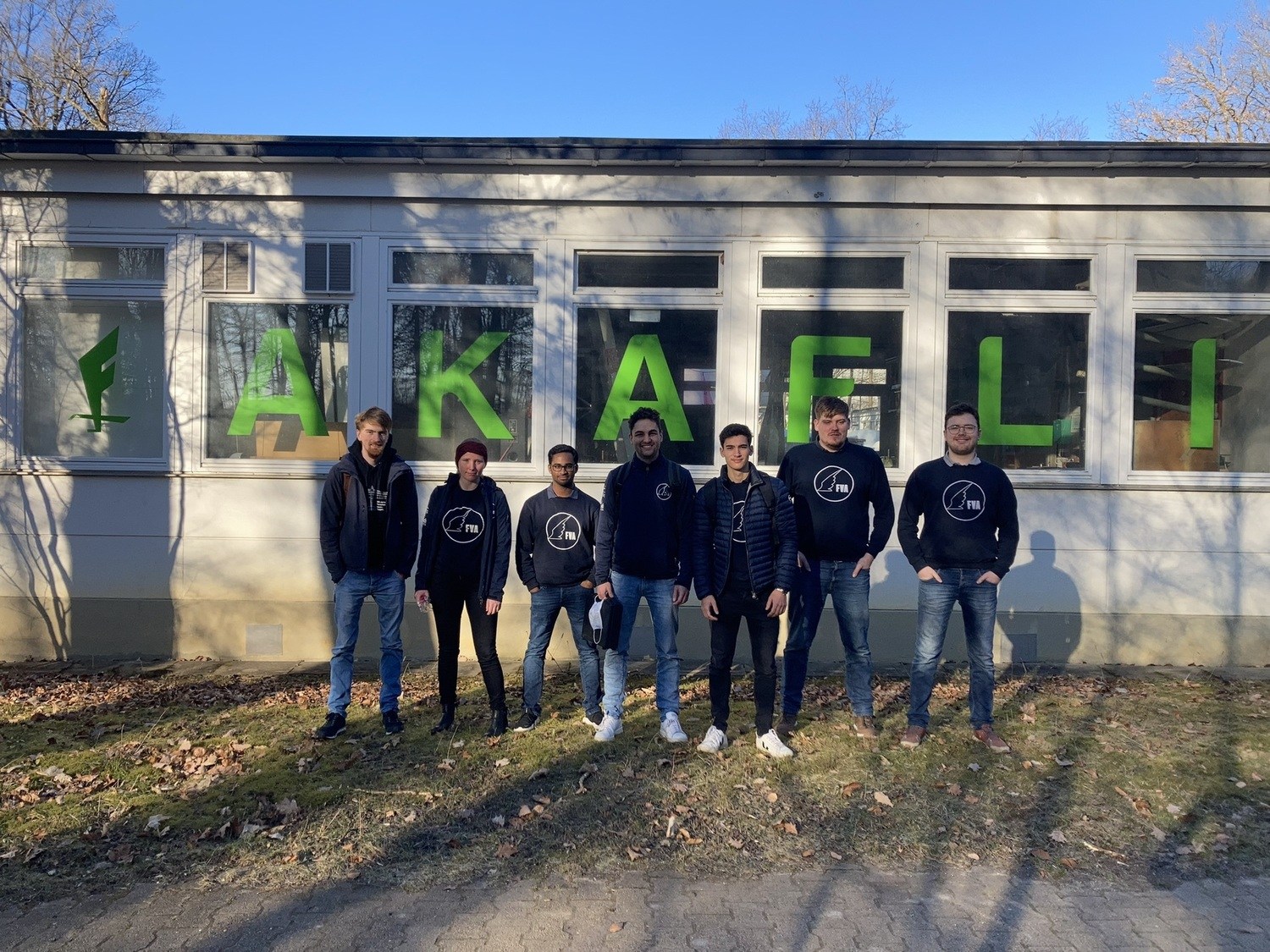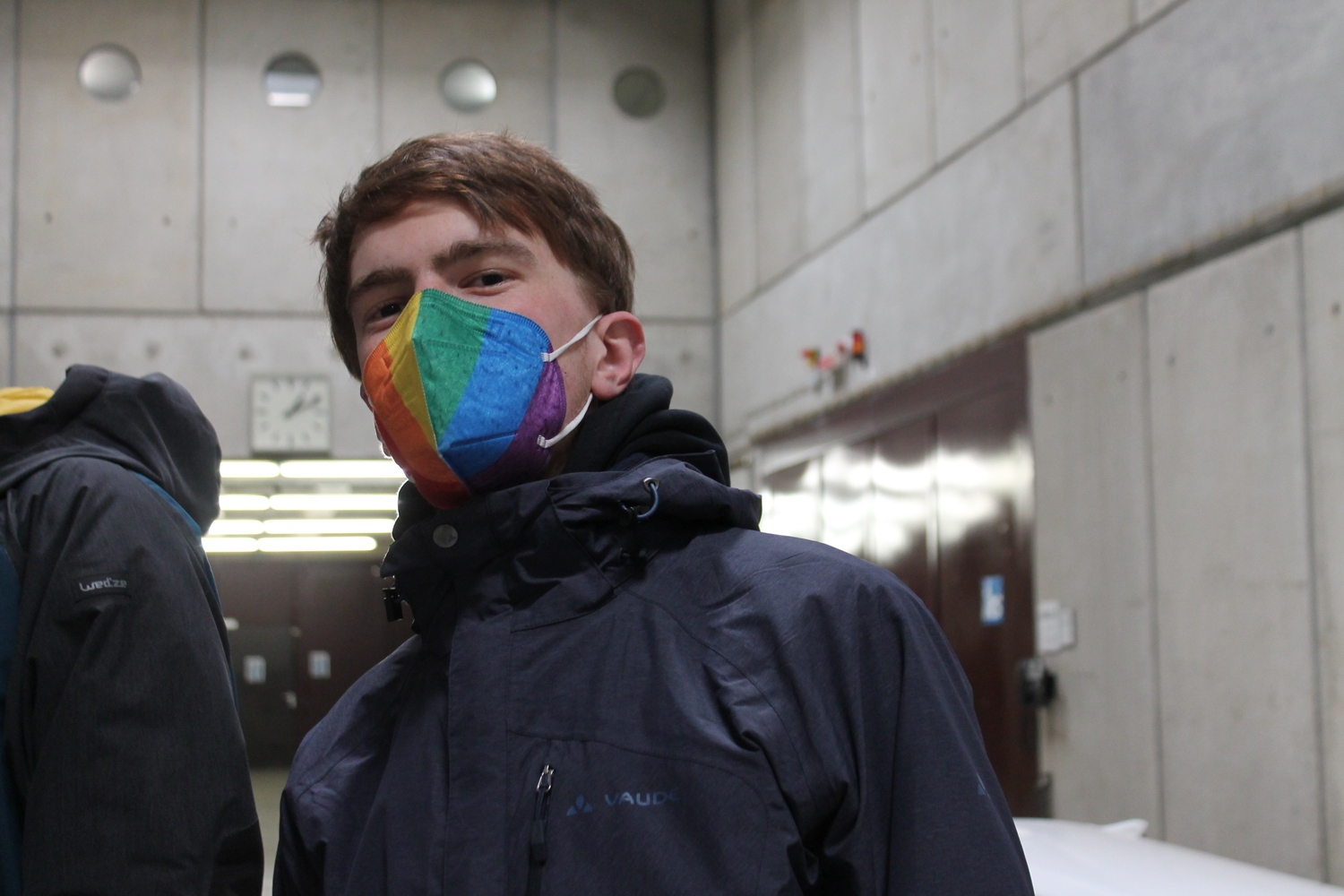Published: 10.03.2022 by Paul Ignatiadis
After some members of the FVA already visited the Institute of Aircraft Design (IFB) in Stuttgart in 2019 to check out their electric powered glider e-Genius, which is the prototype of our FVA 30, it was time for another visit last week. Since the first visit in Stuttgart, our team has changed a lot. Besides clarifying open questions, the goal was also to motivate the current team with a view of an aircraft that the FVA 30 will later closely resemble. Without wanting to anticipate too much, our trip was worthwhile in all respects.
The honor of the trip to Stuttgart was bestowed upon 8 members of the FVA, who traveled in two cohorts to Stuttgart. The first cohort left for Stuttgart already on Sunday morning, i.e. one day before, in order not to have to make the 5-hour journey early on Monday morning, as our second travel group did. Thankfully, the Akaflieg Stuttgart offered us a place to sleep. Thanks again for the food and hospitality!
Finally, the day at IFB started at 9:00 am with a good coffee and a presentation by FVA 30 project leader Paul “Küken” Ignatiadis, who was allowed to present the current status of the project. Subsequently, we discussed together with Jonas Lay and Andreas Bender, the project leaders of the e-Genius, concrete issues in the design, construction and certification of both aircraft. The lively exchange clearly showed how useful the visit was for FVA 30 alone, as many problems are very similar due to the similarity of the two projects. After the discussion and a lunch break on the campus grounds of the University of Stuttgart, we were able to make the moment we had been waiting for with great anticipation a reality and see the e-Genius in real life far from any photo or CAD model.
Fortunately, the e-Genius was undergoing winter maintenance, which is why it was stationed in the IFB workshop in an unrigged state. Thus, we were also able to take a closer look at the interior of the aircraft. Insights were provided into the fuselage as well as the inner wings of the e-Genius. Especially the size of the fuselage was impressive! Although we are intimately familiar with the dimensions of the powered glider, in reality it appears larger than one would expect. From the big one, we moved on to the smaller 1:3 model of the e-Genius at the end of the day, which is used, among other things, for research into vibration behavior and structural dynamics.
In summary, our trip was a big step forward for us. Once again, we took important information, good advice and a large portion of motivation back to Aachen. Furthermore, we got the opportunity to catch a glimpse into a possible future of FVA 30, how it could soon look like in reality (approximately).
I personally look forward to the future with great anticipation and would like to thank Jonas Lay and Andreas Bender for their time.

Group photo with the e-Genius fuselage

An obligatory short visit to the Akaflieg Stuttgart
